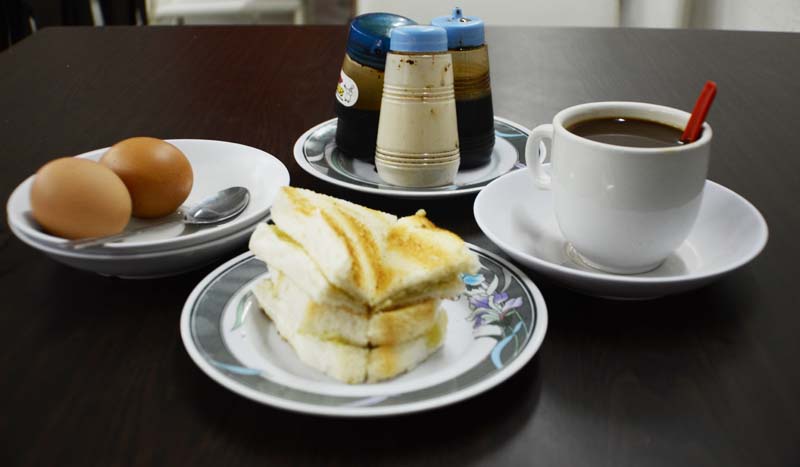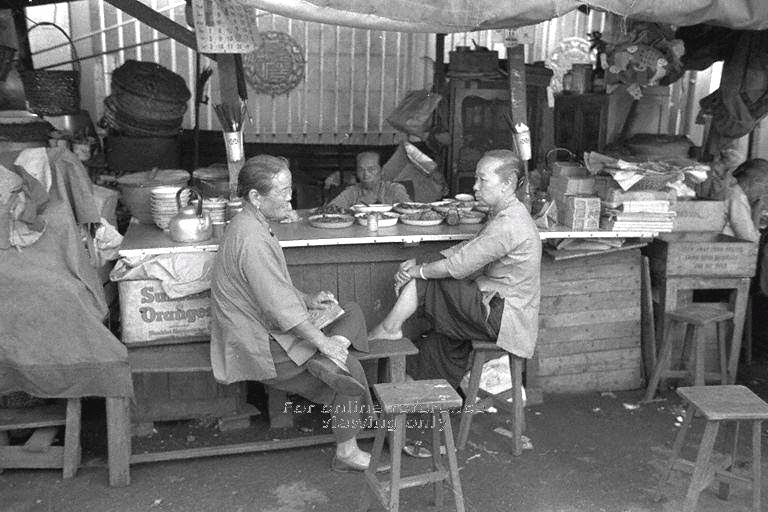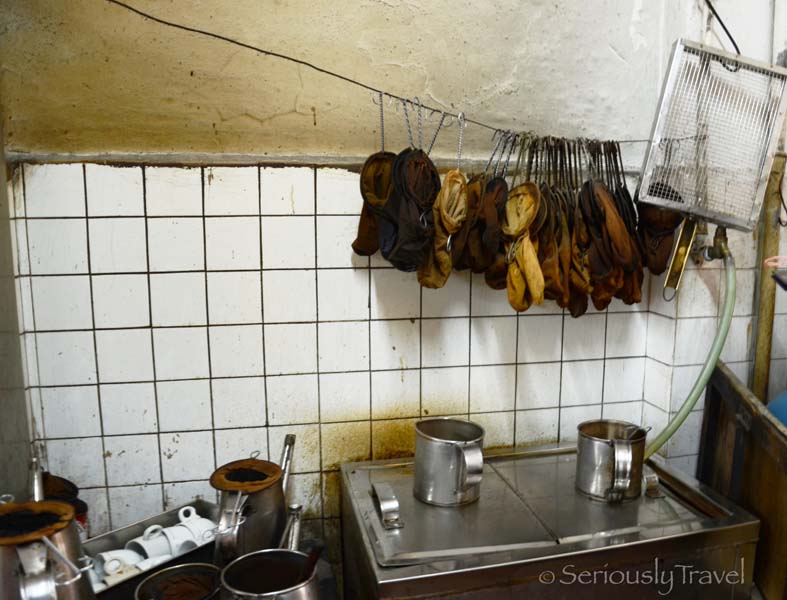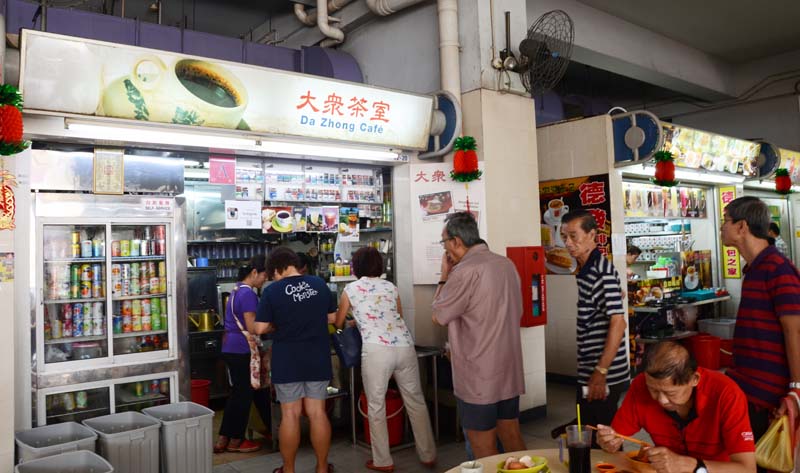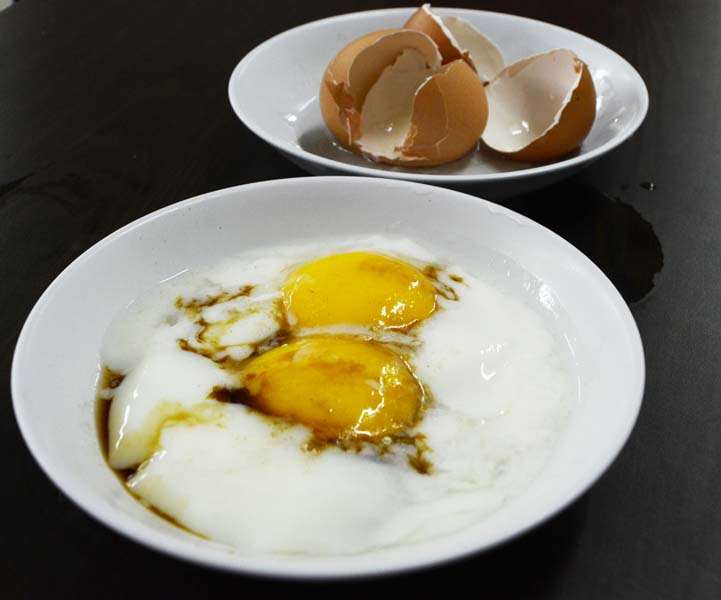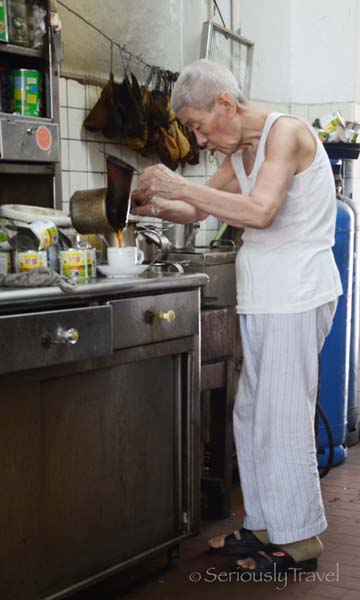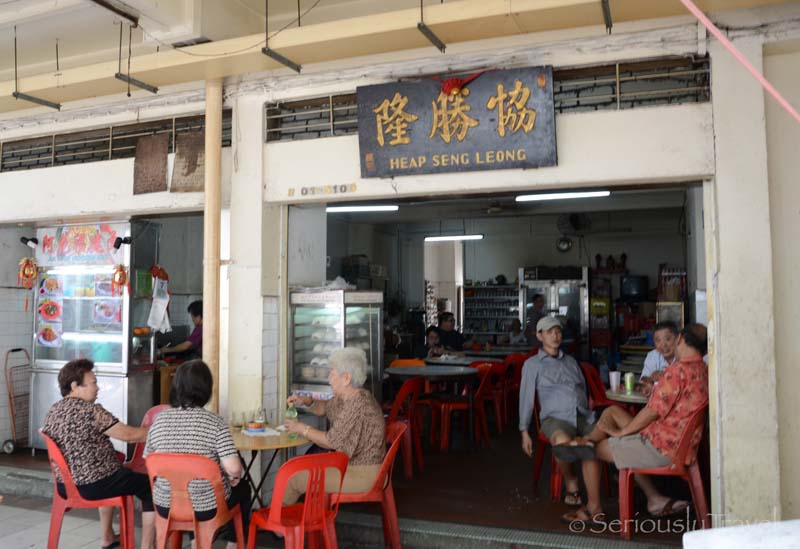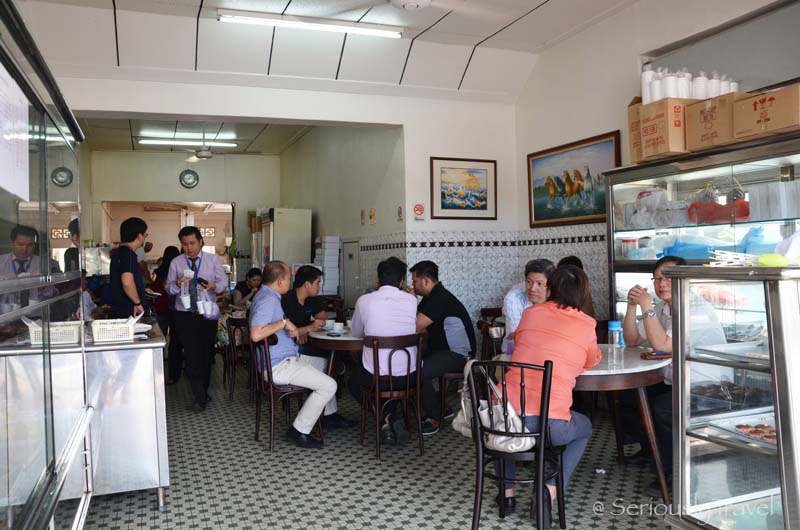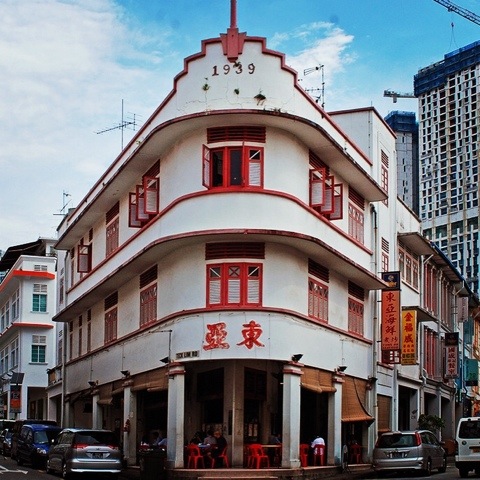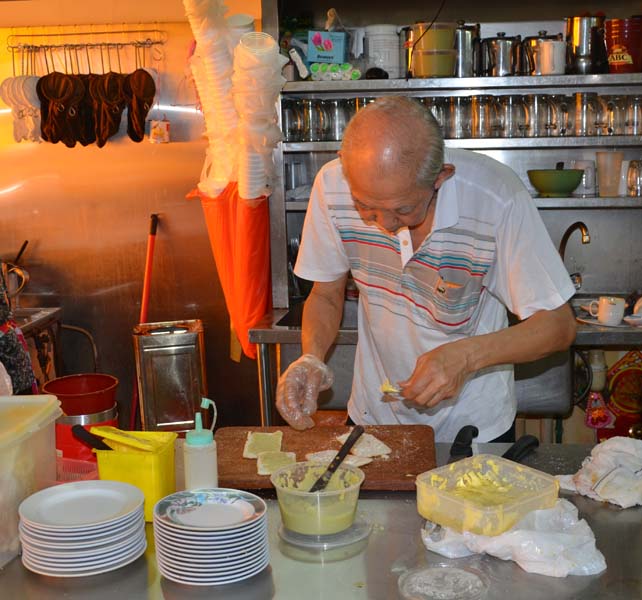If you live in or are visiting Singapore having an old-style breakfast of Kopi, watery, boiled eggs, and toast slathered with butter and Kaya jelly (a thick coconut jam) at a traditional Kopitiam is a must. Making the Kopi is an art form perfected by sock masters, men who use a specific ritual and set of simple tools to produce individual cups of coffee.
With a different café popping up every week the younger generation of Singapore would rather have fast and trendy opposed to slow and traditional. Like many old customs, the Sock Master is quickly becoming a thing of the past.
The word Kopitiam echoes the multilingual culture of Singapore — “kopi” is the Malaysian word for coffee, “tiam” is the Hokkien word for shop. Kopitiams are open-aired establishments similar to mini food courts consisting of food stalls on the ground floor of almost every government-built apartment complex. Sure, you can find Kopi in air-conditioned establishments but they don’t have the feeling of nostalgia and comradery shared by the Uncles and Aunties (terms of endearment and respect for the older generation in Singapore) of the neighborhoods.
In the 1900s, when Singapore was a British colony, Chinese men, who were hired as cooks in expat homes, opened small coffee shops that offered cheap meals to the ever-growing working class. These Chinese cooks familiarized the Western habit of drinking coffee and eating toast and eggs for breakfast to Singaporeans.
The coffee served was distinct from any found in Western coffee shops. Forced to use cheap coffee beans, cooks enhanced the flavor by wok frying them with butter (or lard) and sugar giving the beans a unique, rich taste.
The ground beans were then strained through long, cotton “socks” packed with sugar. The mixture, thick and black, was then skillfully passed from one copper coffee pot to another with water added to dilute it to drinkable form.
Today, if you ask an Uncle for butter Kopi you’ll get an odd look, shake of the head, and wave of the hand as few Kopi houses make it; some, however, do still hold true to tradition by adding a pat of butter to the the cup. I have to admit, other than a slightly salty, greasy flavor, the taste is not much different to regular Kopi.
Some owners of stalls in Hawker Centers throughout Singapore still cling to the sock master ritual. I found four that I favor and recommend.
Da Zhong Kopi Stall is located at Hainanese Village Food Centre, Blk 105 Hougang Ave 1, #02-20. I found the proprietor, Mr. Tay Eng Chiang preparing and serving kopi to a steady stream of people eager for their morning caffeine.
After waiting my turn, I sat down to enjoy the rich, strong coffee made with condensed milk and a large tablespoon of evaporated milk. There are several ways to enjoy Kopi and I had mine with less sugar and more milk. The Kopi is quite concentrated and the hit of caffeine can last all day!
With my order came two runny eggs that are slopped up with the Kaya toast. The remaining eggs are traditionally slurped directly from the dish.
At Heap Seng Leong Kopitiam located at Block 10, North Bridge Road, No. 01-5109, Shi Pong Hsu, a 77 year-old Uncle with a cranky demeanor and wearing pajama bottoms, takes orders, makes the Kopi, and serves patrons.
Walking to the back of his shop I noticed that, in the middle of the day, it was crowded with locals reading papers or in heavy discussions in languages I didn’t understand; in this place with sticky, cracked tabletops, and chipped plastic chairs, I realized that this was the quintessential Kopi Singaporean experience.
Chin Mee Chin Confectionery is located at 204 East Coast Road, which winds around Singapore’s Eastern shore. Housed in a prewar shop the location is more inviting, as it resembles the original Kopitams of the 40s. The willowy wooden chairs and tables equipped with immaculate white marble tops are alluring and the traditional Kopitiam cups ensure that the Kopi will retain it’s heat if you happen to get involved in the many debates discussed by locals.
Most Kopitiams use Kaya jelly from a jar but Chin Mee Chin makes its own, thick, rich Kaya, which has a slightly eggier scent. It also boasts it’s homemade Kaya served on hot rolls baked on the premises.
The last shop that I highly recommend is one of the oldest in Singapore. Tong Ah Eating House is located at 35, Keong Saik Road Singapore 089142.
Although it has moved from its iconic location positioned at the triangle end of Keong Saik Road, loyal customers still pack this traditional Kopitiam. It was founded over 75 years ago by the great grandfather of Mr. Tang, the current owner.
The Kopi is much the same here as it was in other Kopitams but the Kaya toast that I ordered was thin and only lightly toasted. The thin layer of homemade Kaya jam and butter was perfectly combined and I thoroughly enjoyed the difference.
As an expat and much the outside observer, I realized that the stall owners share a passion of tradition and heritage, and I wondered what will happen to that tradition once their generation dies out. Will the youth remember and appreciate their relatives that helped make Singapore what it is today?
Have you been to Singapore? Have you visited one of these traditional Kopi shops? Witnessing the last of these Kopi masters is a must! Share your experience with us!


